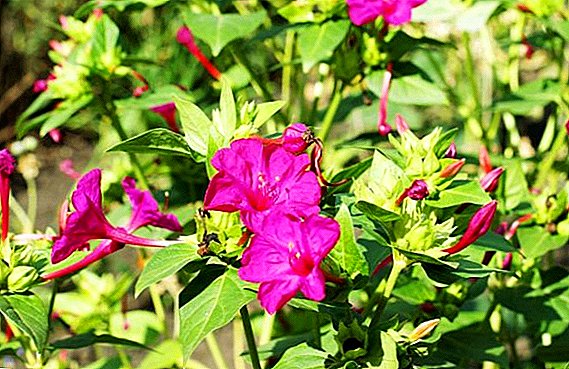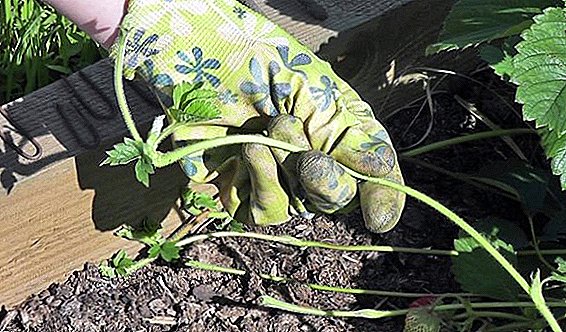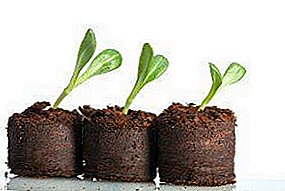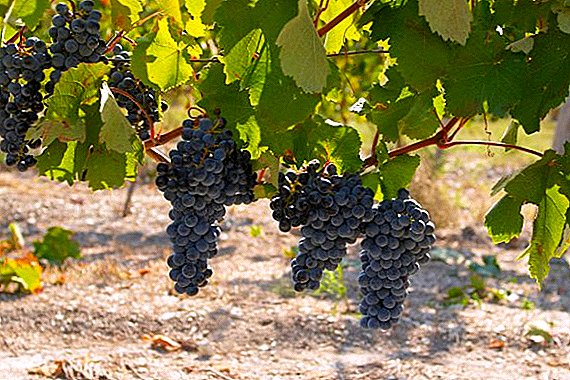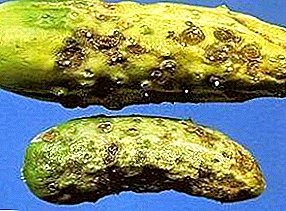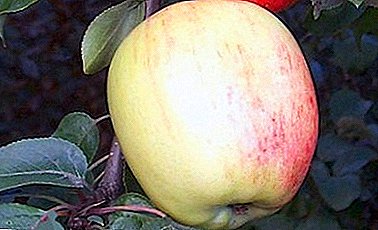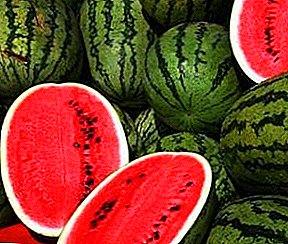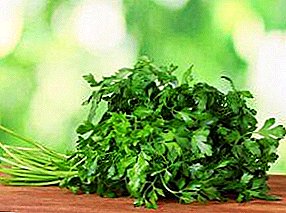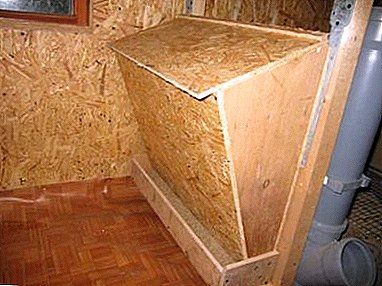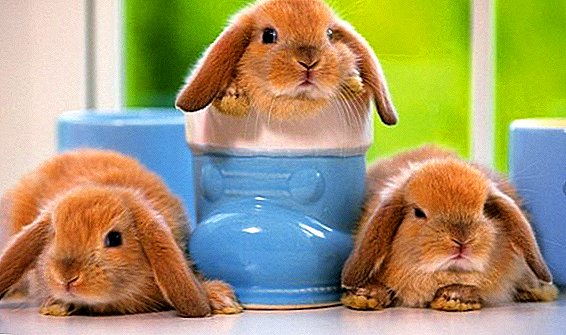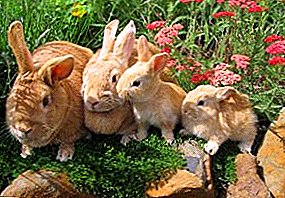 When breeding farm animals, the question of their active growth is far from the last place in the farmer’s list of concerns, because productivity indicators directly depend on this. In each case, there are individual reasons for the poor development of animals, but as far as rabbits are concerned, first of all, you should pay attention to several main factors. What are the reasons and how to fix the problem - read on.
When breeding farm animals, the question of their active growth is far from the last place in the farmer’s list of concerns, because productivity indicators directly depend on this. In each case, there are individual reasons for the poor development of animals, but as far as rabbits are concerned, first of all, you should pay attention to several main factors. What are the reasons and how to fix the problem - read on.
Why rabbits grow poorly
Most rabbits can be called "early ripening", because small rabbits grow and develop quite quickly, and in some cases they are already ready to give posterity by 4 months. However, this is possible only with sufficient body weight, and sometimes it is clearly not up to the norm. 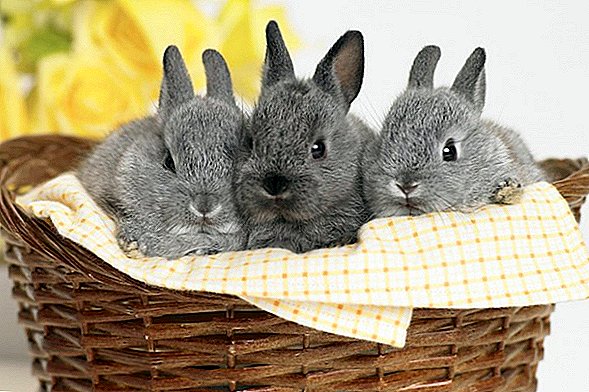 Among the main reasons for the slow growth and development of these cute fluffies may be the presence of disease, an incorrect diet, poor housing conditions and the mating of relatives (especially close ones). Consider each of these factors more closely.
Among the main reasons for the slow growth and development of these cute fluffies may be the presence of disease, an incorrect diet, poor housing conditions and the mating of relatives (especially close ones). Consider each of these factors more closely.
Due to illness
Among the common ailments of domestic rabbits, there are only two diseases that differ in a noticeable effect on the growth and development of animals: intestinal coccidiosis and helminthic invasion.
Intestinal coccidiosis - a disease of invasive nature caused by unicellular parasites by coccidia (in rabbits there are up to 10 species that can affect not only the intestines, but also the liver of animals).
We recommend to learn the symptoms of coccidiosis in rabbits and methods of its treatment.
The main symptoms of the disease are successive diarrhea and constipation, complemented by bloating. Sick individuals quickly lose weight, body tone decreases, hair becomes dull, and in severe forms, motor activity disturbances and cramps in the limbs are possible.  Typically, the duration of the disease is 10-15 days, which is characterized by pronounced symptoms. However, in the liver form of coccidiosis (usually complements the intestinal), all the symptoms persist even longer, up to 50 days. If time does not begin treatment, then the death of the animal is inevitable.
Typically, the duration of the disease is 10-15 days, which is characterized by pronounced symptoms. However, in the liver form of coccidiosis (usually complements the intestinal), all the symptoms persist even longer, up to 50 days. If time does not begin treatment, then the death of the animal is inevitable.
Did you know? The rabbit has a forked uterus, so at the same time they can wear two broods of rabbits conceived by different males at different times.
An accurate diagnosis can be made only on the basis of information from the anamnesis, supplemented by the results of laboratory studies, after which it is usually prescribed treatment. Among the currently popular drugs for intestinal coccidiosis of rabbits are the following:
- Baycox - composition, presented in liquid form and used for watering diseased animals. It is considered the best way to prevent and treat the disease described.

- "Sulfadimetoksin" - tablets, which are recommended to be crushed to a powdered state before use. In this form, the drug is added to the feed of rabbits, adhering to the following scheme: on the first day, 0.2 g per 1 kg of live weight, and over the next four days, 0.1 g per 1 kg of weight. After 5-7 days, repeat the course.
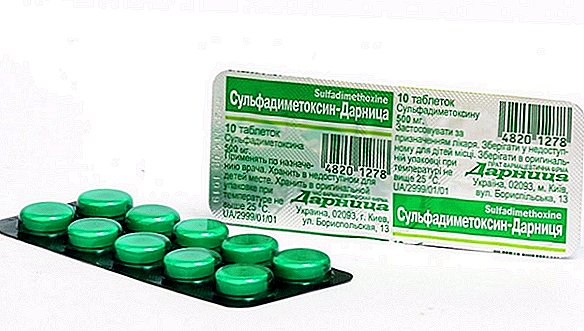
- "Furazolidone" - Another tablet drug, usually used in a ground form. The course of treatment is 1 week, during which 30 mg of substance are used for 1 kg of live weight of rabbits. The use of this drug will not destroy coccidiosis pathogens, but it will help the body cope with the disease.
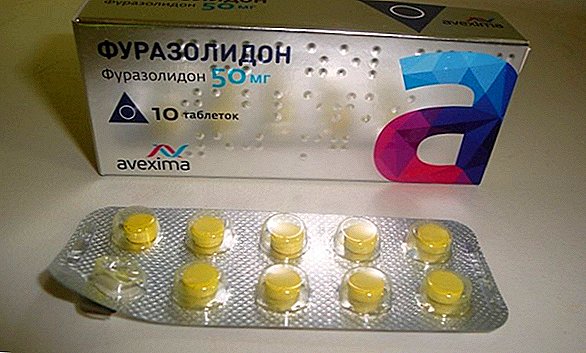
- "Ftalazol" + "Norsulfazol" - You can give animals for 5 days at 0.1-0.3 g per 1 kg of live weight, and after a week break, repeat the course.

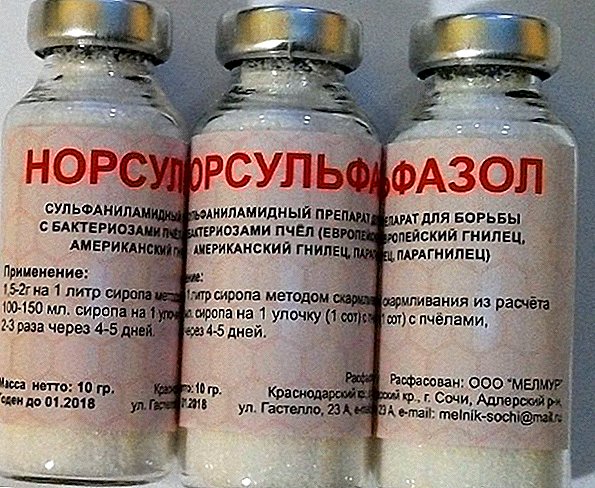
Worm infestation. The presence of helminth eggs in the body is another common cause of insufficient weight gain in animals.
Inside the parasites get along with food or hay and are able to maintain their activity for a long time, and if there are favorable conditions for development, they very quickly turn into worms, which continue to multiply, leaving many new larvae.
Important! After the disappearance of all symptoms of coccidiosis, recovered individuals still remain carriers of the disease for a whole month, so it is better to move them immediately to the quarantine zone.
For their nutrition, worms use not only useful substances that come with food, but also animal cells, which is why they eat a lot of food, but remain as small as they have dull hair and unkempt appearance. If the farmer’s suspicions are confirmed by the results of relevant analyzes, then it is worthwhile to immediately engage in deworming. 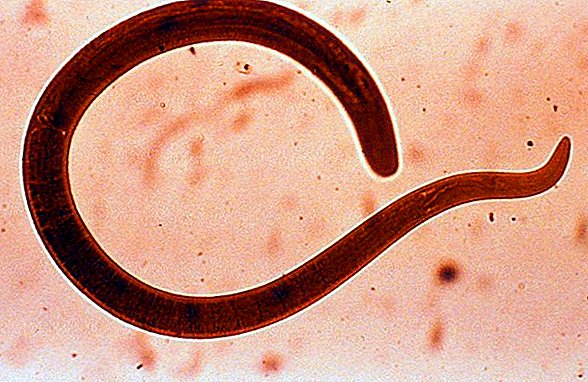 For these purposes, drugs such as Albendazole and Gamavit are often used to complement each other. The application scheme in this case looks like this:
For these purposes, drugs such as Albendazole and Gamavit are often used to complement each other. The application scheme in this case looks like this:
- On the first day, "Gamavit" is injected by subcutaneous injection (for young individuals, 0.5-1 ml per head, for adult animals - 1.5-2 ml).
- On the second day, the injection is repeated in the same dosage.
- On the 3rd day, "Albendazole" is added to "Gamavit" in the calculation of 0.75 ml of suspension per 1 kg of live weight. The calculation of the drug should be carried out separately for each rabbit, and the maximum daily dose should be divided into two times.
- On the 4-5th day, you need to repeat the procedure, as on the 3rd day, and the next three days use only "Gamavit" in the form of a subcutaneous injection.

Malnutrition
Proper nutrition of rabbits - the first thing you should pay attention to the breeder. The presence of a balanced feed with the optimal amount of nutrients in summer and winter should prevent the problem of weight gain, of course, in the absence of other reasons for this phenomenon. Mandatory components of the diet of your eared pets should be:
- green grass in summer (it is better to give alfalfa, clover, vetch, sweet lupine, nettle, dandelions, plantain, burdock, tansy) or fresh hay in winter;
- roots (especially carrot);
- roughage: straw, twigs of trees (conifers and leafy);
- concentrated feed mixtures including cake, corn grain, oats, bran, and also mixes intended for other domestic animals (only not birds);
- food waste: pasta, dried bread (crackers), the remnants of the first and second courses, but only fresh;
- vegetable tops (carrots, beets, turnips, potatoes), cabbage leaves.
 Also, we should not forget about such important components of the menu, as mineral and vitamin supplements, which replenish the body of nutrients in animals. First of all, bone meal, chalk and table salt will be useful in this regard.
Also, we should not forget about such important components of the menu, as mineral and vitamin supplements, which replenish the body of nutrients in animals. First of all, bone meal, chalk and table salt will be useful in this regard.Agree that rabbits should receive the most nutritious and healthy feed. We advise you to read when and how to feed eared animals at home, as well as consider the feeding habits of rabbits in winter.
To the extent possible, skim milk, fish oil, buttermilk and whey should be used, which will be especially appropriate in the winter season, when all farm animals are deficient in vitamins. Feeding rabbits with only one type of food may well lead to weight gain and limited growth.
Video: how to feed rabbits for rapid growth
Bad conditions of detention
Considering the possible reasons for the limited growth of their eared wards, do not forget to pay attention to their conditions of detention. In the cages, cleanliness and dryness should always be maintained, and young animals should preferably be kept on grid floors (16x24 mm mesh).
As for the size of the cage, then everything depends on the breed of animals, but in any case they should have enough space for free movement (the average parameters of such a place are 150x70x70 cm). 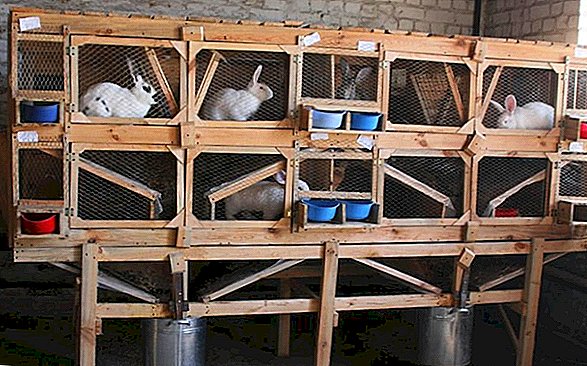 In addition, your pets should have constant access to clean water, hay and feed mixtures, but it is advisable that they do not spill liquid or trample feed, for which special drinkers and feeders are used. In small, dirty and damp cages, rabbits feel very uncomfortable, often get sick and can even die, not to mention the decrease in productive indicators.
In addition, your pets should have constant access to clean water, hay and feed mixtures, but it is advisable that they do not spill liquid or trample feed, for which special drinkers and feeders are used. In small, dirty and damp cages, rabbits feel very uncomfortable, often get sick and can even die, not to mention the decrease in productive indicators.
Did you know? A rabbit weighing about two kilograms is able to drink as much water as a ten-kilogram dog drinks.
Related mating (inbreeding)
Inbreeding is another possible problem of limited eared growth. When mating close relatives (parents and children or brothers and sisters), similar cells merge, resulting in a weakened embryo. 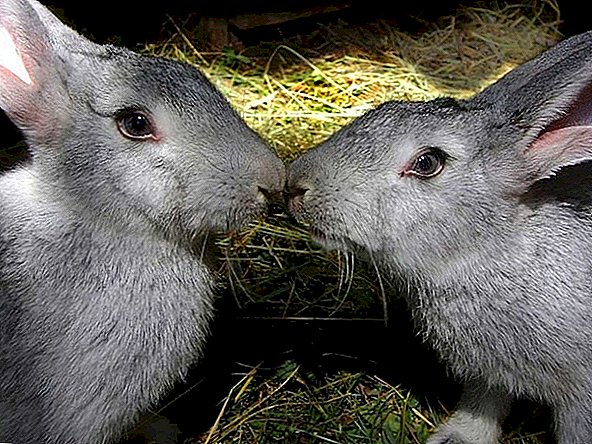 After birth, such animals grow very slowly, are sick more often and bring less offspring. In some cases, inbreeding becomes the main reason for the birth of ugly or stillborn baby rabbits.
After birth, such animals grow very slowly, are sick more often and bring less offspring. In some cases, inbreeding becomes the main reason for the birth of ugly or stillborn baby rabbits.
The consequences of closely related mating appear not only in the first, but also in subsequent broods, therefore professional breeders periodically update the males on their farms or simply change their cages (if we are talking about large-scale animal breeding).
Rabbit hunters should find out what breeds to choose for crossing rabbits.
Young repair males, which were transferred to the main herd, in the same composition are moved to other departments, and the male descendants only after 5-6 years return to the place where their forefathers began to be used.
Thus, related mating of individuals is possible only in the 6-7th generation, and in order to further minimize the negative impact of inbreeding, it is advisable to grow relatives in different conditions. 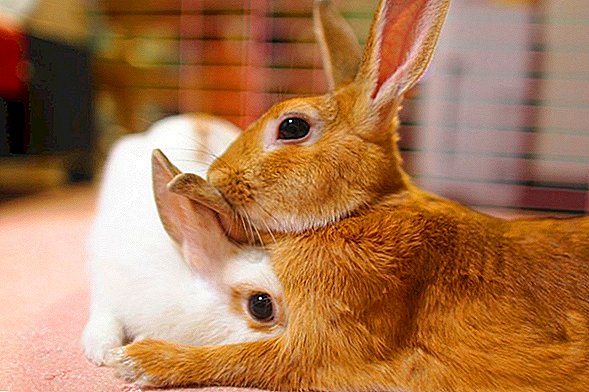 The closely related mating of rabbits can be justified only by linear breeding, that is, by breeding inbred lines, with a high degree of homozygosity. With the skillful use of kin mating, scientists, indeed, succeed in consolidating and separating valuable genotypic characteristics, but in other cases such experiments cannot be considered appropriate.
The closely related mating of rabbits can be justified only by linear breeding, that is, by breeding inbred lines, with a high degree of homozygosity. With the skillful use of kin mating, scientists, indeed, succeed in consolidating and separating valuable genotypic characteristics, but in other cases such experiments cannot be considered appropriate.
Did you know? On average, a female rabbit feeds her cubs about 5 minutes a day, but due to the high fat content of her milk, this time is enough for the offspring.
Dwarf breed
Breed characteristics of the animal always leave an imprint on its appearance, since it must more or less comply with the accepted standards of the breed. Ornamental or dwarf rabbits actively grow only up to three months, and at six months of age, their growth almost completely stops. 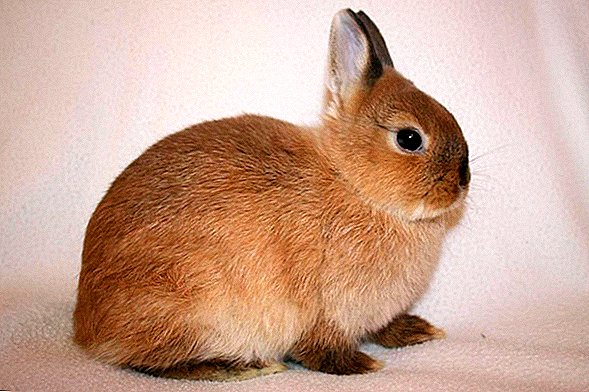 The final values can be expected at 8 months, and the next time the animal will not change. Of course, if the breeder doesn’t really understand the breeds, then he may well be sold a "dwarf" baby instead of a representative of the meat trend, so limited growth will be quite normal even with a balanced diet.
The final values can be expected at 8 months, and the next time the animal will not change. Of course, if the breeder doesn’t really understand the breeds, then he may well be sold a "dwarf" baby instead of a representative of the meat trend, so limited growth will be quite normal even with a balanced diet.
You will certainly be useful to consider the characteristics of the fox pygmy rabbit and especially its content at home.
Care and vaccination
Reducing the risk of weight problems will help compliance with the rules of care for rabbits and timely vaccination of livestock. The first and one of the most important points when breeding these animals at home is considered to be regular cleaning and disinfection of cages, drinkers and feeders.
In the place where the small rabbits are kept, the dishes are cleaned several times a day, using soda solution or a weak solution of potassium permanganate for disinfection. 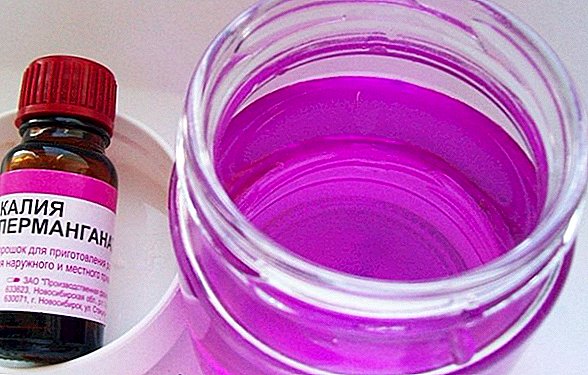 The change of the litter layer (for example, straw or hay) is performed at least once a week, and the complete treatment of the cells is done at least once a month. Of course, for the time of all cleaning activities, animals are transferred into separate cages, and the exception is only very small rabbits.
The change of the litter layer (for example, straw or hay) is performed at least once a week, and the complete treatment of the cells is done at least once a month. Of course, for the time of all cleaning activities, animals are transferred into separate cages, and the exception is only very small rabbits.
Together with the dishes it is recommended to disinfect the equipment used in the care, since pathogens can also remain on it.
As for vaccination, there are several treatment schemes that use vaccines for specific problems - mainly rabbit viral hemorrhagic disease (UHD) and myxomatosis. It is also possible to use an associated vaccine, which includes components to protect against both diseases.  The vaccine scheme for VGBK looks like this:
The vaccine scheme for VGBK looks like this:
- 1st vaccination - at the age of 6 weeks (with a weight of an animal not less than 0.5 kg);
- 2nd vaccination - 3 months after the first.
Today the most effective preventive vaccine for rabbits is Rabbiwak V.
Vaccination for myxomatosis involves the following sequence of actions:
- 1st vaccination - at the age of not less than 4 weeks (preferably in the spring period);
- 2nd vaccination - a month after the first;
- 3rd vaccination - 5-6 months after the primary vaccination.
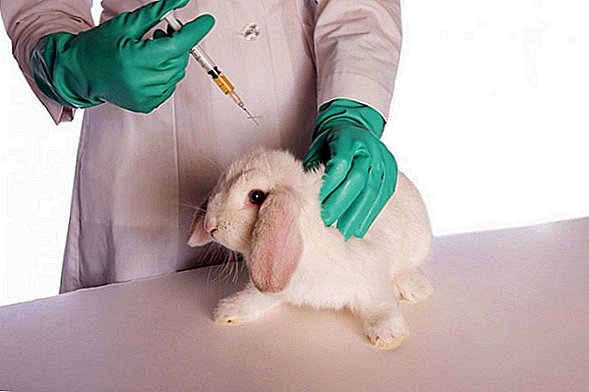 With the successful use of all three vaccines, revaccination should be performed twice a year: in spring and autumn, throughout the life of the rabbit.
With the successful use of all three vaccines, revaccination should be performed twice a year: in spring and autumn, throughout the life of the rabbit.Important! All steps in each of the schemes are mandatory, because if you made the first vaccinations and decided to return to vaccination only six months later, they will be considered inactive, and you will have to use the vaccine again.
If you plan to use both vaccines (from both UHDB and myxomatosis), then it is recommended to follow the following scheme:
- The first vaccination is performed at 45 days of age with the use of the UHD vaccine (or myxomatosis).
- Two weeks later give a vaccine against myxomatosis (or UHD, if the first time was used for myxomatosis).
- After another two weeks, we fix the action first.
- And then (another 14 days) and the effect of the second vaccine.
- After an incident of 2-3 months, the achieved effect can be fixed with an associated vaccine or a vaccine against myxomatosis, supplemented after two weeks with a vaccine for UHD.
- In the future, vaccination of animals is performed every six months using the associated vaccine or monovaccines, with intervals between applications in two weeks.
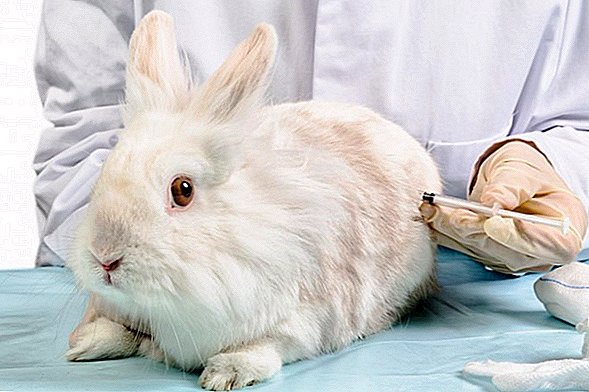 Only if all the requirements for the care, nutrition and vaccination of rabbits are met, you can not be afraid of problems with their development.
Only if all the requirements for the care, nutrition and vaccination of rabbits are met, you can not be afraid of problems with their development.






